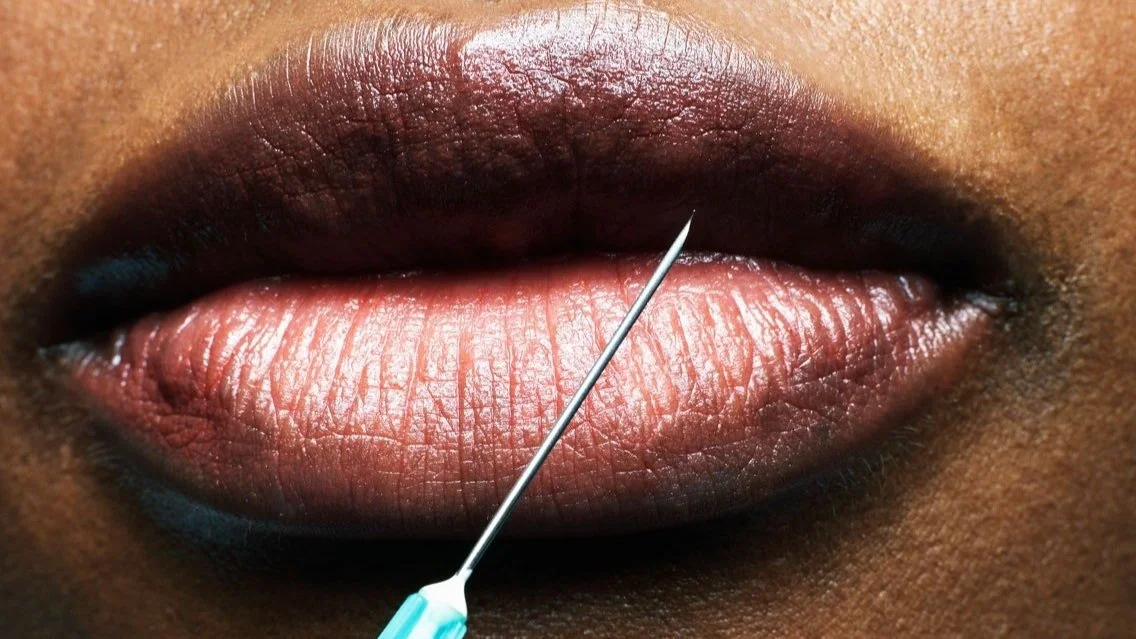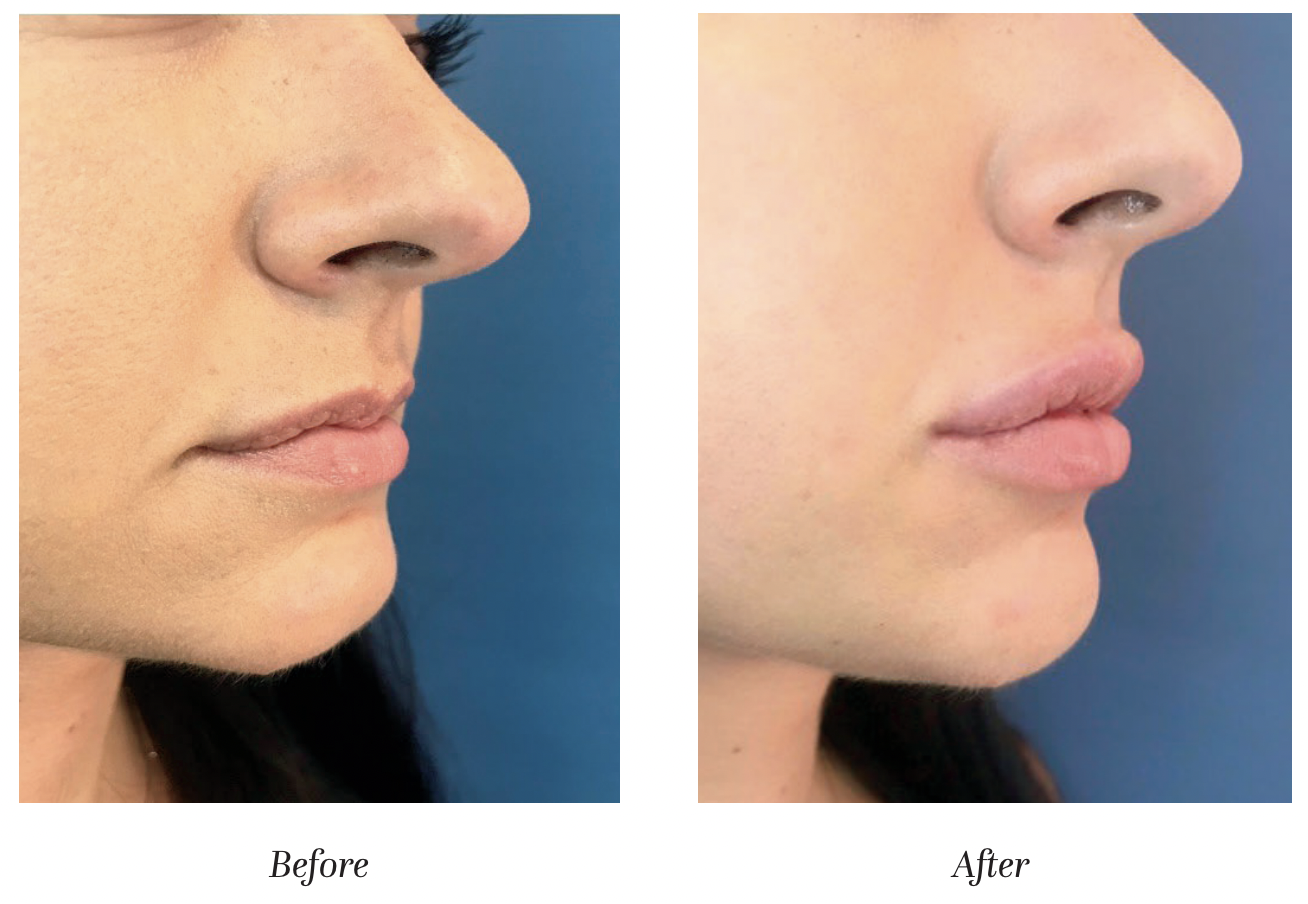The Secrets of how to Potentially Avoid Dermal Filler Complications
With the placement of dermal fillers for facial rejuvenation becoming increasingly popular, practitioners and patients must be mindful of the potential complications associated with facial filler placement. I have written this article in a way that it should provide utility for everyone – for practitioners who wish an evidence-based aid memoire, and for patients who wish to find out more about the potential risks of treatment, and what they and their practitioner can do to reduce the risks. I will present a case which highlights how I managed a lip filler complication in one of my patients. Moreover, I will provide some simple evidence-based tips on how to help avoid complications.
Common adverse events associated with injectable dermal fillers include swelling and infection, although more serious events such as skin necrosis and even blindness can occur. (1) The most common injection sites in the face that give rise to problems are the lips, nasolabial folds (lines between the base of the nose and corners of the mouth) and cheeks. (1) Swelling and bruising can occur with any injection treatment, and the usually settle after a few days. Infections again can occur after any injection through the skin, although they are more likely to occur if the skin is already broken and inflamed, or if the injector doesn’t adequately cleanse the skin before the treatment. (2,3) Although very rare, skin necrosis (death of an area of skin) can occur when injecting the face, as can loss of vision when injecting around the eyes, upper nose and forehead, (1) Skin necrosis and blindness occur as a result of filler material being inadvertently injected into one of the facial blood vessels which results in either blockage of the vessel, or the filler tracks upstream to block an artery further away (as is the case with blindness). (2) More commonly, bad cosmetic results in dermal filler treatment can be as a result of nodule formation – these nodules can either be a collection of filler material, or an area of tissue that develops a reactive inflammatory response to the injected filler. Nodule formation can be associated with poor injecting technique, overfilling, inappropriate choice of filler material, or injection into inappropriate anatomical sites. (2,4)
Case report
I present a case involving one of my patients, a 29-year-old lady, who attended my clinic for some corrective treatment for her previous facial filler treatment. I have written the case in such a way as to avoid too much technical jargon, and instead wish to highlight the consultation and treatment pathway, and the dialogue that the patient and I had in order to get the best outcome for her.
The patient attended my clinic requesting correction of the ‘nodules’ on her lips which were as a result of a recent dermal filler treatment provided by another clinic. She told me that the upper lip had exuded pus from the puncture sites for several days after the injections. Following this, she told me there was an insidious onset of mildly tender nodules in the upper lip, which she started to notice around 2 weeks prior to her attendance to me.
I listened to her story, asked questions about her past medical history, concerns and expectations of possible treatments, and then examined her. I then explained the diagnosis to her – cosmetically unacceptable inflammatory nodules in the upper lip, which occurred as a result of inappropriate placement of hyaluronic acid based dermal filler. In view of the possible presence of a low-grade bacterial infection in the nodules we agreed to an initial course of antibiotics, and then at the next appointment we would consider injection of hyaluronidase (a product that dissolves hyaluronic acid fillers) should there be any residual nodules.
At the review appointment she reported a resolution of the previously described tenderness of the lips, and that the nodules felt softer and looked less pronounced. Therefore, we both agreed that the antimicrobial therapy was successful in removing the infection, but the nodules still remained. Hence, we agreed to commence hyaluronidase treatment to remove the residual nodules and follow this up with corrective filler placement. In each of the hyaluronidase and filler sessions, a standard aseptic technique was employed - the skin was cleansed with an antiseptic solution, and the lips were anaesthetised using dental anaesthetic injections.
Prior to injecting the hyaluronidase (Hyalase®) I carried out patch testing injections on her arm (a small volume of Hyalase® is injected just under the skin to see if there is a reaction) in order to check that she wouldn’t have an allergic reaction to the Hyalase® lip injections. No reaction occurred after a 30-minute period, and therefore I injected Hyalase® into the upper lip nodules - the patient was observed for a further 60 minutes to ensure no adverse reactions occurred, and during this period aftercare instructions were given.
Clinical review 2 weeks after the Hyalase® treatment revealed complete resolution of the upper labial nodules, with no reported symptoms. Consequently, she was re-consented for the placement of filler. The lips were treated with Teosyal® RHA2. The patient was very satisfied with the cosmetic result and reported no complications following discharge from the clinic.
How to reduce your risk of facial filler complications:
• Pick your patients – the most important part of the treatment is the assessment and pre-treatment discussions with the patient. There is no point in rushing this process – practitioners require to fully understand a patient’s background and expectations, and address any uncertainties or concerns, before embarking on treatment. In most situations, patients with unrealistic expectations or signs of body dysmorphia (abnormal or fixated beliefs about their appearance) should not be offered treatment; (5) as very often such patients will be unsatisfied with any treatment provided, no matter how good the outcome looks to everyone else.
• Consent – conducting a very thorough consultation, including discussions about the potential risks and cost of treatment are vital in order to obtain valid informed consent for treatment. Evidence suggests that 2/3rds of facial filler litigation cases involved a lack of valid consent.1 Once again, practitioners and patients should not rush this stage of the process – patients who are uncertain about whether they wish to embark on a proposed treatment plan should be given time to reflect – this may involve them going away with a copy of their quotation, consent form and information leaflets, and returning at a later date.
• Photographs – clinical photographs before and after treatment are vital for treatment planning discussions with the patient and for critical appraisal of treatment after it has been completed. (5)
• Skin prep – reduce the risk of infection by ensuring that all makeup is removed before injecting, and the skin is cleansed with a suitable antiseptic solution. (3) My personal preference is the antiseptic spray, Clinisept+®, as it is fragrance free and non-irritant.
• Pick your product – it is vital to use a reversible hyaluronic acid filler product that can be removed with Hyalase® if required;5 avoid permanent or semi-permanent fillers, or any unlicensed products, as they are much more likely to cause problems and cannot easily be reversed or removed. My personal preference for hyaluronic acid fillers are: Vivacy®,Teosyal® & Juvéderm®.
• Know your anatomy – in depth knowledge of facial anatomy is imperative for all practitioners, so to avoid injecting into inappropriate sites. (5) Doctors, dentists and nurses will have received the relevant professional training in anatomy. Individuals not professionally trained in facial anatomy should not be conducting facial filler treatments.
• Prescribers – although serious complications with facial fillers are rare, more common problems such as infections and nodules will often require prescription of antibiotics or other medications. Prescribers in the UK will either be doctors, dentists or nurses, and it is illegal for non-prescribers to prescribe and administer the medications used to treat facial filler complications. Therefore, non-prescribers should not be carrying out dermal filler treatments.
• After care – ensure that patients are instructed both verbally and given written instructions on how to look after their skin following treatments5 e.g. avoid applying cosmetics or shaving for at least 2 days after treatment, (3) and apply SPF.
References
(1) Rayess HM, Svider PF, Hanba C, Patel VS, DeJoseph LM, Carron M, Zuliani GF. A Cross-sectional Analysis of Adverse Events and Litigation for Injectable Fillers. JAMA Facial Plast Surg. 2018 May 1;20(3):207-214. doi: 10.1001/jamafacial.2017.1888. PMID: 29270603
(2) Woodward J, Khan T, Martin J. Facial Filler Complications. Facial Plast Surg Clin North Am. 2015 Nov;23(4):447-58. doi: 10.1016/j.fsc.2015.07.006.PMID: 26505541
(3) Ferneini EM, Beauvais D, Aronin SI. An Overview of Infections Associated With Soft Tissue Facial Fillers: Identification, Prevention, and Treatment. J Oral Maxillofac Surg. 2017 Jan;75(1):160-166. doi:10.1016/j.joms.2016.09.004. Epub 2016 Sep 14. PMID: 27717817
(4) Differentiating Nonpermanent Injectable Fillers: Prevention and Treatment of Filler Complications. Graivier MH, Bass LM, Lorenc ZP, Fitzgerald R, Goldberg DJ, Lemperle G. Aesthet Surg J. 2018 Apr 6;38(suppl_1):S29-S40. doi: 10.1093/asj/ sjy032.PMID: 29897521
(5) Heydenrych I, Kapoor KM, De Boulle K, Goodman G, Swift A, Kumar N, Rahman E. A 10-point plan for avoiding hyaluronic acid dermal filler-related complications during facial aesthetic procedures and algorithms for management. Clin Cosmet Investig Dermatol. 2018 Nov 23;11:603-611. doi: 10.2147/ CCID.S180904. eCollection 2018.PMID: 30538521


